Disclaimer: This content is for educational purposes only, not medical advice. Always consult with a doctor before making significant changes to your diet, especially if you have pre-existing health conditions.
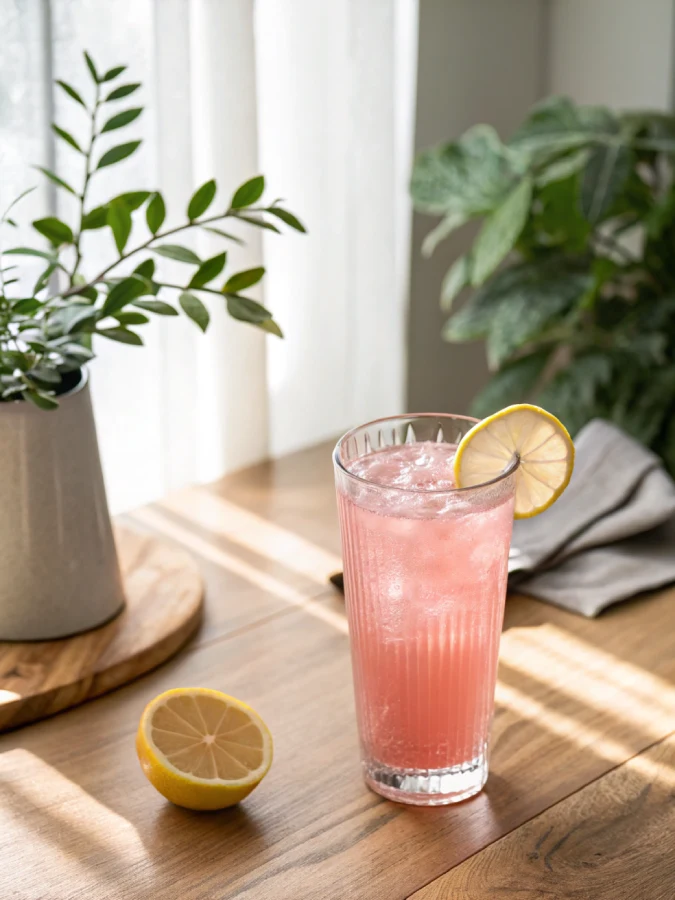
The pink salt diet is one of today’s most viral wellness trends, promising weight loss, better hydration, and a metabolism boost, all by adding Himalayan pink salt to your water. But does this pink mineral magic actually help, or is it just another flashy online myth? In this article, we’ll break down what the pink salt diet is, explore the science (or lack of it), share safe ways to try it, and explain why experts warn about potential risks. You’ll get a clear, honest answer on whether this trend belongs in your health routine or just your Instagram feed.
In this Article
Key Takeaways: What You Need to Know
- The pink salt diet is a wellness trend, not a science-backed weight loss method.
It involves drinking water mixed with Himalayan pink salt, sometimes with lemon or honey. While it’s popular on TikTok and Instagram, there’s little scientific evidence supporting its claims. - The supposed “4-ingredient pink salt trick” is just water, pink salt, lemon, and honey.
It’s simple but doesn’t offer magical weight loss benefits. Most effects are related to hydration, not fat burning. - Any weight loss is likely temporary water loss, not fat.
Experts agree that any drop on the scale is due to water changes or better hydration habits, not actual fat reduction. - There are health risks, especially for people with high blood pressure or kidney issues.
Most Americans already consume too much sodium. Adding more, even as pink salt, can increase cardiovascular risks. - Himalayan pink salt does contain trace minerals, but in negligible amounts.
It’s mostly just sodium chloride, like table salt. The minerals don’t significantly impact metabolism or weight. - If you’re curious to try it, do so with caution.
Use a very small pinch (1/16 tsp), and drink plenty of plain water throughout the day. Avoid it altogether if you’re on a sodium-restricted diet. - Better weight loss strategies include whole foods, hydration, and movement.
Stick to proven habits: stay active, eat balanced meals, sleep well, and manage stress. Natural wellness drinks like herbal teas or apple cider vinegar blends may help slightly, but nothing replaces lifestyle change. - Experts and health authorities do not recommend the pink salt diet for weight loss.
It may be harmless in moderation for healthy individuals, but it’s not a shortcut. Always consult your doctor before trying new wellness trends. - Trending doesn’t equal effective.
Just because a recipe goes viral doesn’t mean it works. Stick with what’s backed by evidence, not hype. - Conclusion: Pink salt may look pretty, but it’s not a magic bullet.
For sustainable wellness, focus on hydration, nutrition, and consistency, not quick fixes.
My Story and Why Pink Salt Sparked My Curiosity
I first heard about the pink salt diet while scrolling through wellness trends like the ones we cover in our pink salt trick for weight loss guide. As a chef and founder of EatWellWell, I’m always curious about what’s hype and what’s helpful. So, one morning, I mixed the drink myself: cold water, a pinch of Himalayan pink salt, and a splash of lemon, like described in the pink salt trick recipe for weight loss. I wanted to see if I’d feel the energy or lightness that people rave about online. Spoiler: it mostly just tasted like salty lemonade.
Growing up in a big family near Austin, Texas, I saw my mom master pantry magic, turning simple, affordable ingredients into meals full of love. That’s why I always approach trendy recipes, whether it’s the pink salt drink or the popular Japanese pink salt and ice recipe, with both excitement and skepticism.
What intrigued me most was how many people were mixing pink salt into wellness routines alongside things like the homemade Mounjaro recipe with pink salt or the viral apple cider vinegar and cranberry juice drink. But is there real science behind it? That’s what we’ll unpack next.
What Is the Pink Salt Diet and Where Did It Come From?
What is the pink salt diet?
The pink salt diet isn’t a formal eating plan, it’s a wellness trend that’s gone viral on TikTok, Instagram, and wellness blogs. At its simplest, it’s about adding a small pinch of Himalayan pink salt to a glass of water, sometimes with lemon or honey, and drinking it first thing in the morning. Fans claim it boosts hydration, speeds up metabolism, reduces bloating, and even helps with weight loss. You’ll find detailed steps in posts like the pink salt trick recipe for weight loss that guide users on how to mix it.
The basic recipe includes 8–12 ounces of water, a pinch of pink salt, and optional lemon or honey. This is sometimes called the “4-ingredient pink salt trick,” and it’s often combined with other wellness hacks like the natural Mounjaro recipe with 4 ingredients or chia seeds in coffee.
Where did it come from?
The pink salt trend didn’t come from doctors or nutritionists, it was popularized by wellness influencers and social media posts blending folk remedies with modern diet ideas. Himalayan pink salt, mined from ancient sea beds, is praised for its trace minerals like magnesium, calcium, and potassium, unlike regular table salt. Advocates of the pink salt diet claim these minerals support hydration, digestion, and adrenal balance.
Trendy combinations, like the Japanese pink salt and ice recipe or the homemade Mounjaro recipe with pink salt, keep the hype alive. But while it’s visually appealing, science shows little proof these drinks result in fat loss. Experts warn that any weight change is likely water loss, not true fat reduction, similar to results seen with the apple cider vinegar and cranberry juice drink.
What are the 4 ingredients in the pink salt trick?
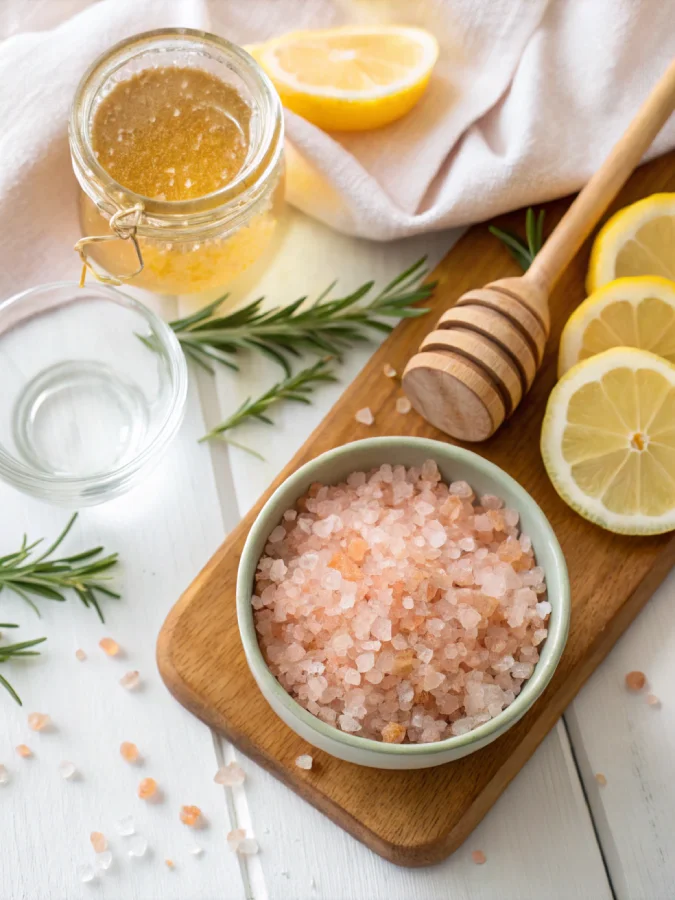
The most common pink salt drink recipe includes:
- 8–12 ounces of water
- A small pinch (about 1/16 teaspoon) of Himalayan pink salt
- A squeeze of fresh lemon or lime (optional)
- 1 teaspoon honey or pure maple syrup (optional)
You can find variations online, such as adding vinegar, or even combining it with recipes like the natural Mounjaro recipe with 4 ingredients or chia seeds in coffee for extra “fat-burning” claims.
While the recipe sounds harmless, experts emphasize that most people already consume too much sodium and don’t need extra. And any weight loss you see after drinking salty water is likely just water weight, not fat loss.
Does Pink Salt Help You Lose Weight? Science vs. Claims
What does research say about pink salt for weight loss?
Despite the viral excitement, the pink salt diet has no scientific backing for weight loss. Experts repeatedly emphasize that while pink Himalayan salt contains trace minerals like magnesium and potassium, the amounts are too tiny to meaningfully impact metabolism or fat burning. As explained in sources like is the pink salt trick a scam?, the biggest effect from drinking pink salt water may be temporary water retention, not fat loss.
In fact, too much sodium can cause water retention, making you feel bloated or even increasing your weight on the scale. Any feeling of “detox” or reduced bloat likely comes from better hydration overall, not the salt itself. Research supports hydration as part of weight management, but we’re talking about plain water, like you’d pair with natural approaches such as the apple peel recipe for weight loss, not salted versions.
What happens if I eat pink salt every day?
Eating pink salt every day won’t magically help you lose weight, and it might do more harm than good. The average American already consumes nearly 50% more sodium than recommended, and adding more, as in the pink salt diet, raises health concerns. According to the U.S. Food and Drug Administration, excess sodium increases the risk of high blood pressure, kidney problems, and cardiovascular disease.
If you have conditions like hypertension or kidney disease, the pink salt trend is especially risky. As explained in wellness reviews, even if you combine pink salt drinks with routines like the natural Mounjaro recipe for weight loss, it won’t “balance hormones” or fix adrenal issues. The bottom line? Rely on hydration, whole foods, and proven lifestyle changes, not salt water tricks, to reach sustainable health goals.
How to Drink Pink Salt Safely (If You Still Want To)
How to drink pink salt for weight loss (the “safe” version)
If you’re determined to try the pink salt diet, it’s crucial to do it safely. Experts recommend keeping the amount of pink Himalayan salt tiny, a pinch, or about 1/16 teaspoon, stirred into 8–12 ounces of water. This diluted mix minimizes the sodium load, reducing health risks. Many online recipes, like those in the pink salt trick for weight loss article, also add a squeeze of lemon or a teaspoon of honey for taste, but these don’t increase weight loss effects.
Supporters of the pink salt diet claim it helps with hydration, energy, and metabolism, but the science shows otherwise. If you’re looking to hydrate, plain water or mild electrolyte drinks, like what’s used in routines such as the natural Mounjaro recipe with pink salt, is often more effective. Remember, water can sometimes blunt appetite and aid digestion, but salt doesn’t add metabolic magic.
Who should never try the pink salt trick?
The pink salt diet is not safe for everyone. People with hypertension, kidney disease, or anyone on a sodium-restricted diet should absolutely avoid it. According to health experts and sources like is the pink salt trick a scam?, adding more sodium to your daily intake can raise blood pressure, stress the kidneys, and increase cardiovascular risks. Even healthy individuals should be cautious; most people already consume more salt than their body needs.
Before trying the pink salt diet, think critically: Are you hoping for a shortcut, or are you pairing it with proven weight loss strategies? Approaches like the apple cider vinegar and cranberry juice method or chia seeds in coffee offer hydration or mild appetite support but don’t replace the essentials: calorie control, exercise, and whole foods.
Healthy Alternatives That Actually Work

Why hydration matters for weight loss
While the pink salt diet promises hydration, experts agree that plain water does the job just as well, if not better. Research shows that staying hydrated can slightly increase feelings of fullness, helping you naturally reduce calorie intake. Studies referenced by the FDA on sodium in your diet warn that most Americans already consume too much salt, making additional sodium from the pink salt diet unnecessary or even harmful.
Instead of relying on pink salt drinks, focus on simple hydration strategies. Try herbal teas, plain water, or unsweetened sparkling water to support your weight goals. Combining hydration with proven approaches like the apple peel recipe for weight loss or the natural Mounjaro recipe for weight loss can help you stay on track without excess sodium.
Proven ways to support fat loss
The pink salt diet can’t replace fundamentals like a balanced diet, regular exercise, and a calorie deficit. Experts recommend focusing on whole foods, such as fruits, vegetables, whole grains, and lean proteins, which help control appetite and improve nutrition. Exercise matters, too: aim for at least 150 minutes of moderate activity per week, plus strength training twice weekly.
For those exploring natural strategies, routines like chia seeds in coffee or the apple cider vinegar and cranberry juice mix can add mild appetite or digestion support. But remember, no trick, pink salt included, will melt fat without lifestyle change. As highlighted in the Wikipedia entry on Himalayan salt, pink salt is mostly valued for its mineral content and appearance, not weight-loss powers.
Expert Opinions and Common Questions
Does the pink salt trick actually work?
The pink salt diet has captured social media attention, but medical experts say it’s not a proven weight loss method. According to health reviews, there’s no scientific evidence that drinking water with Himalayan pink salt boosts metabolism or burns fat. While it may help some people hydrate, overdoing sodium can backfire, causing water retention, bloating, and increased blood pressure.
If you’re intrigued by wellness trends, it’s better to combine hydration strategies with balanced eating, like incorporating recipes from the natural Mounjaro recipe for weight loss or the apple peel recipe for weight loss. But remember: even these should be part of an overall healthy lifestyle, not a shortcut.
Is pink salt better than table salt?
Many supporters of the pink salt diet claim pink Himalayan salt is healthier because of its mineral content. While it does contain trace minerals like magnesium and potassium, as explained in the Wikipedia article on Himalayan salt, these amounts are tiny and don’t provide meaningful health benefits. Nutritionally, pink salt and table salt are nearly identical, both are primarily sodium chloride.
Health experts and the FDA recommend limiting sodium overall, regardless of type. So even if you’re adding pink salt through trendy methods like the pink salt trick recipe for weight loss, moderation is essential. Remember, the real keys to better health are balanced meals, hydration, movement, and good sleep, not relying on any single ingredient.
FAQs
What is the pink salt diet?
The pink salt diet is a wellness trend where people add a pinch of Himalayan pink salt to water, often with lemon or honey, and drink it first thing in the morning. It’s believed to help with hydration, metabolism, and weight loss, but there’s little scientific evidence to support these claims. You can read more in our guide on the pink salt trick for weight loss.
How to drink pink salt for weight loss?
If you want to try the pink salt diet, use only a small pinch (about 1/16 teaspoon) of pink salt in 8–12 ounces of water, optionally with lemon or honey. Recipes like the pink salt trick recipe for weight loss outline these steps. But remember, this drink doesn’t replace proper nutrition or exercise.
Does pink salt help you lose weight?
Current research says no—the pink salt diet doesn’t directly lead to fat loss. Any slight change on the scale is usually water weight. Better alternatives include focusing on hydration with plain water and incorporating real foods, like those in the apple cider vinegar and cranberry juice drink.
What is the pink salt trick for weight loss recipe?
The common recipe includes water, a small pinch of Himalayan pink salt, lemon, and sometimes honey. It’s often paired with other wellness hacks, such as the Japanese pink salt and ice recipe, but remember—these drinks are not magic solutions.
What is the 4-ingredient pink salt trick?
This refers to water, pink salt, lemon, and honey or sometimes apple cider vinegar. It’s featured in many social media posts and wellness blogs but lacks scientific backing.
Does the pink salt trick actually work?
No solid evidence shows the pink salt diet speeds up metabolism or leads to weight loss. Experts recommend focusing on calorie balance, hydration, and exercise instead.
What happens if I eat pink salt every day?
Eating too much pink salt daily increases sodium intake, which can raise blood pressure and harm kidney health. According to the FDA on sodium in your diet, most people already exceed safe sodium levels.
Conclusion
The pink salt diet is a fascinating example of how a wellness trend can take off despite lacking strong scientific support. While pink Himalayan salt looks pretty and offers trace minerals, it’s no miracle for weight loss or metabolism. Drinking salt water can even be harmful, especially for people with heart or kidney conditions.
Real, lasting health changes come from the basics: balanced nutrition, regular movement, quality sleep, and managing stress. If you’re interested in mindful wellness practices, you’re better off focusing on hydration through plain water or trying recipes like the natural Mounjaro recipe for weight loss or chia seeds in coffee, but always as part of a broader lifestyle shift.
For those curious about sodium and health, you can explore more in the FDA’s sodium guide or the Wikipedia entry on Himalayan salt. As always, if you have specific health questions, consult your doctor before making changes.
Updated on September 24, 2025 to reflect the latest expert opinions and wellness research trends.

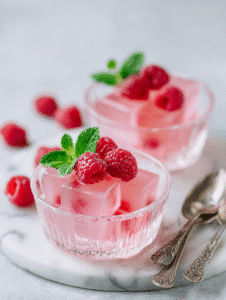
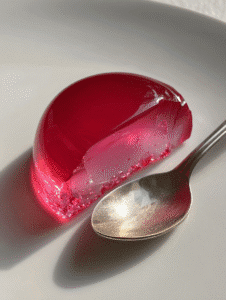
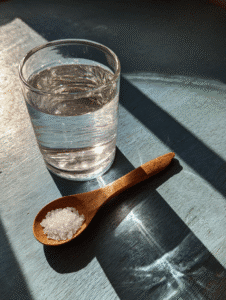
2 thoughts on “Pink Salt Diet: Truths About This Viral Weight Loss Trend”